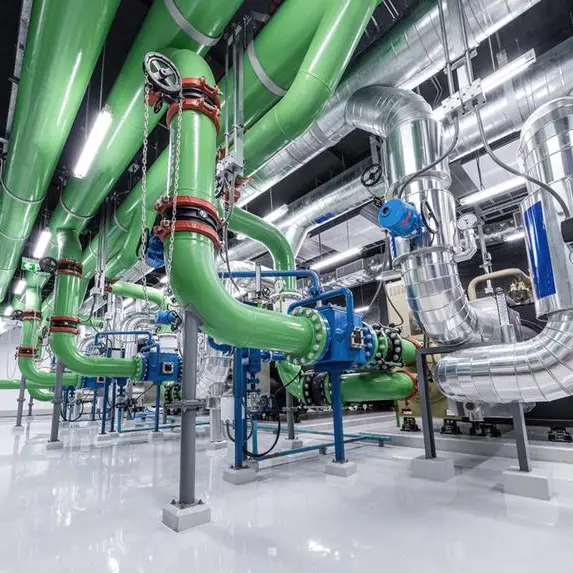All six members of the Gulf Cooperation Council (GCC) have published visions for their peoples’ futures, encompassing economic diversification and placing infrastructure at the forefront of development plans. The region has traditionally approached any built environment programmes with few caps on spending, particularly on high profile projects. Times have changed, however, and a significant infrastructure investment gap has emerged.
Many government departments are looking towards private sector involvement as the solution and are now considering alternative financing models for major projects. Sectors such as water, power and aviation already have an established precedent for private sector involvement, but we can expect to see transport, education, telecommunications and healthcare move into the alternative financing space.
The benefits are certainly attractive, although cheaper finance is not necessarily a given. The private sector expertise and the opportunity to transfer employment costs to the private sector, whilst building capacity and capability in specialist areas for the economy are just a couple to mention.
The concept of alternative finance is not unfamiliar in the region: most countries have some experience of implementing (or attempting to implement) projects using the public-private partnership (PPP) model and applying PPP principles. The concept of a prescriptive PPP legal framework, by which the government outlines the parameters for delivery, however, is relatively new by other countries’ standards due to the historical prevalence of directly funding projects from central government, although Dubai and Kuwait already have a legislative process in place, and Saudi Arabia is working towards this.
Furthering the PPP agenda will require a shift in expectations on the part of many government departments. Part of the learning curve is to achieve a clearer understanding of the risks and how these should best be allocated. The principle of incentivising contractors/suppliers can seem very alien in the local market. Likewise, the prospect of paying more for materials and equipment, to bring lifecycle cost benefits across 25 years, may run contrary to local practice. Structuring a project to ensure the required revenue mechanism is another area where the region lacks expertise.
There are pockets of understanding throughout the region, but the challenge is for this understanding to permeate the supply chain. Hopefully, the year ahead will bring a greater commitment to finding common ground between private and public sector partners. This will enable partnership agreements which incentivise partners to work together to find efficiencies and methods which are beneficial to all stakeholders.
Our experience suggests that successful PPP projects have clear objectives from the outset, with a transparent evaluation criteria and process defined at a very early stage. Finance options should be carefully considered, allowing flexibility between capital markets and debt, ensuring that the best model is selected. This process can be expected to take time, possibly a minimum of 12 months – a challenge to the Middle East culture of immediacy.
Any opinions expressed here are the author’s own
Disclaimer: This article is provided for informational purposes only. The content does not provide tax, legal or investment advice or opinion regarding the suitability, value or profitability of any particular security, portfolio or investment strategy. Read our full disclaimer policy here.
Many government departments are looking towards private sector involvement as the solution and are now considering alternative financing models for major projects. Sectors such as water, power and aviation already have an established precedent for private sector involvement, but we can expect to see transport, education, telecommunications and healthcare move into the alternative financing space.
The benefits are certainly attractive, although cheaper finance is not necessarily a given. The private sector expertise and the opportunity to transfer employment costs to the private sector, whilst building capacity and capability in specialist areas for the economy are just a couple to mention.
The concept of alternative finance is not unfamiliar in the region: most countries have some experience of implementing (or attempting to implement) projects using the public-private partnership (PPP) model and applying PPP principles. The concept of a prescriptive PPP legal framework, by which the government outlines the parameters for delivery, however, is relatively new by other countries’ standards due to the historical prevalence of directly funding projects from central government, although Dubai and Kuwait already have a legislative process in place, and Saudi Arabia is working towards this.
Furthering the PPP agenda will require a shift in expectations on the part of many government departments. Part of the learning curve is to achieve a clearer understanding of the risks and how these should best be allocated. The principle of incentivising contractors/suppliers can seem very alien in the local market. Likewise, the prospect of paying more for materials and equipment, to bring lifecycle cost benefits across 25 years, may run contrary to local practice. Structuring a project to ensure the required revenue mechanism is another area where the region lacks expertise.
There are pockets of understanding throughout the region, but the challenge is for this understanding to permeate the supply chain. Hopefully, the year ahead will bring a greater commitment to finding common ground between private and public sector partners. This will enable partnership agreements which incentivise partners to work together to find efficiencies and methods which are beneficial to all stakeholders.
Our experience suggests that successful PPP projects have clear objectives from the outset, with a transparent evaluation criteria and process defined at a very early stage. Finance options should be carefully considered, allowing flexibility between capital markets and debt, ensuring that the best model is selected. This process can be expected to take time, possibly a minimum of 12 months – a challenge to the Middle East culture of immediacy.
Any opinions expressed here are the author’s own
Disclaimer: This article is provided for informational purposes only. The content does not provide tax, legal or investment advice or opinion regarding the suitability, value or profitability of any particular security, portfolio or investment strategy. Read our full disclaimer policy here.





















